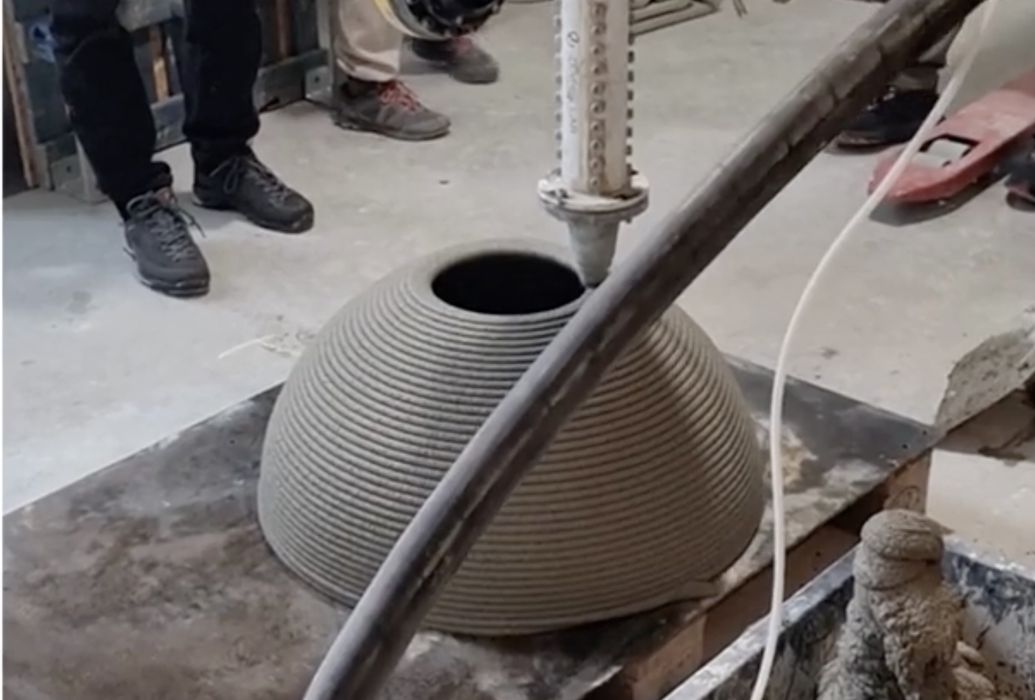
It appears a barrier in 3DCP has been overcome by Zevnik Lab.
The Slovenian company is a materials provider for 3DCP equipment. They explain:
“We are specialized in Digital Concrete, seamlessly integrating these fields to create high-performance materials tailored for 3DCP technology. Our solutions deliver exceptional process parameters, mechanical strength, sustainability, and durability.”
One of the challenges with 3DCP is that concrete isn’t particularly good at overhangs. Like FFF, concrete extrusion tends to fall down unless there is some support structures underneath. For this reason you typically see 3DCP building projects use wood slats to help print window openings, for example.
Sometimes you see 3DCP prints with overhangs, but generally they are done by printing the object on its side, and then rotating it once done.
This limits the possible geometries that can be produced with 3DCP, although the use of the technology is growing regardless. However, if overhangs could be 3D printed, then there could be a much bigger market for the technology.
In a recent post by Luka Zevnik, founder of Zevnik Lab, it seems that they’ve been able to develop a concrete material that can handle a notable amount of overhangs.
In the image at top you can see a half-sphere being 3D printed using a new material from the company.The sphere’s layers gradually move inwards, just as you might see with a FFF 3D print. Each layer appears to have a pretty significant amount of overhang, and there is no support structure underneath.
Zevnik explained:
“This amazing half-sphere print showcases the precision of 3D printing. Material which enables negative angles at the end of printing of a sphere is crucial to prevent collapse, especially for intricate structures. Utilizing high-performance materials like Superprint 3D 2K Grey enables the creation of such complex designs effortlessly.”
For those unfamiliar with with 1K and 2K 3DCP, here’s the explanation:
A 1K system uses a single component for extrusion. This typically involves a premixed material (such as concrete, mortar, or other cementitious substances) that is loaded into the 3D printer and extruded through a nozzle. The material hardens naturally or with the help of external factors such as air curing or the addition of water.
A 2K system uses two separate components that are mixed during the printing process. The two components usually consist of a base material and an activator or hardener (similar to two-part epoxy systems). These components remain separate until the moment they are combined in the printer’s nozzle or just before extrusion.
Zevnik said the material is ”Superprint 3D 2K Grey”, so it would likely be a two-part material. Most 3DCP systems are 1K, so they may not be able to use this material. However, the capabilities enabled by overhangs have much potential and could enable more use of 3DCP in new applications.
Via Zevnik Lab and LinkedIn
